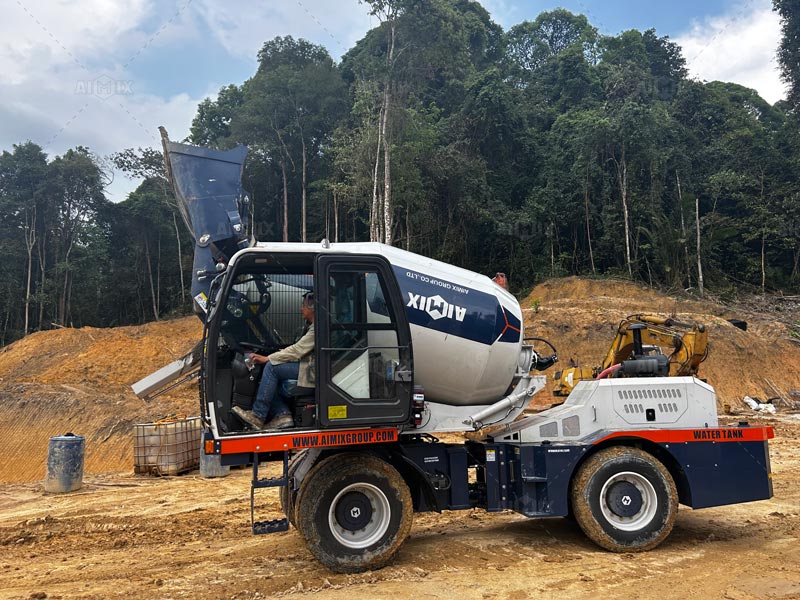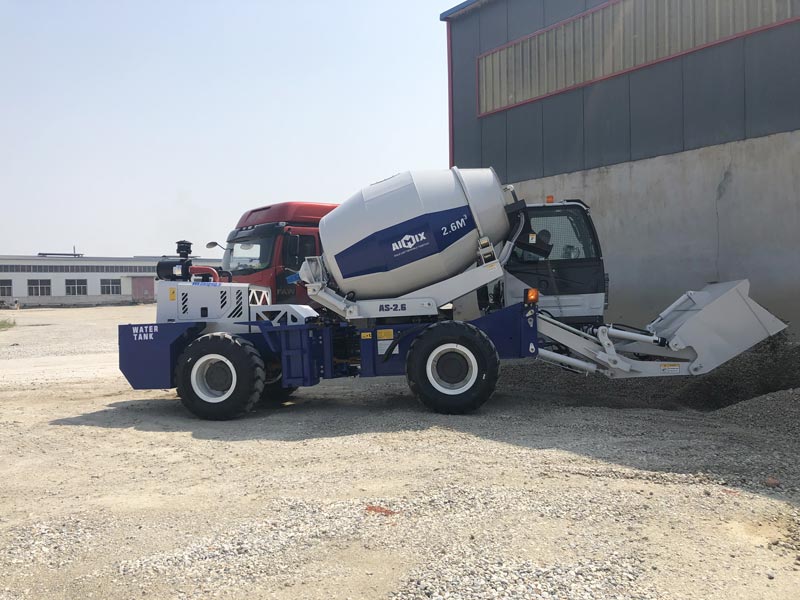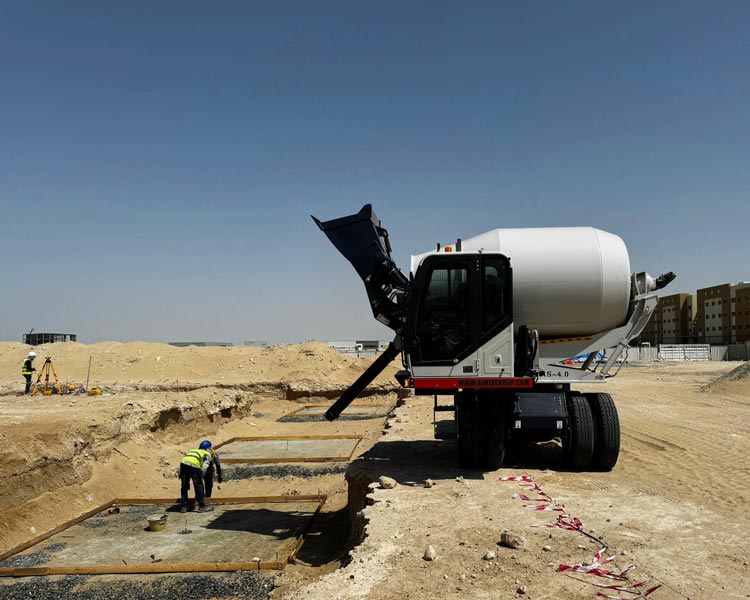Working in remote locations presents unique challenges for concrete work. Limited access, poor infrastructure, and lack of utilities demand specialized equipment. Choosing the right concrete mixer makes all the difference in these tough conditions.
Four types stand out for remote site performance: self-loading concrete mixers, mobile concrete mixers, portable concrete mixers, and hydraulic concrete mixers. Each offers distinct advantages depending on your project needs.

Key Challenges at Remote Construction Sites
Remote locations test equipment reliability and efficiency. Common problems include:
- Rough terrain limits equipment transport
- No reliable power sources available
- Limited access to water and materials
- Difficult maintenance conditions
- Extreme weather exposure
The right mixer must overcome these obstacles while delivering consistent results. Durability and self-sufficiency become critical factors.
Self-Loading Concrete Mixers: The All-in-One Solution
The self-loading mixer concrete excels in remote locations for several reasons:
1. Complete Independence
They load, mix, and pour concrete without additional equipment. This eliminates the need for separate loaders or batching plants.
2. All-Terrain Capability
Many models feature 4WD and high ground clearance. They handle rough access roads better than standard trucks.
3. Fuel Efficiency
Diesel-powered units operate anywhere without electrical hookups. Some offer hybrid options for better fuel economy.
4. Continuous Operation
Large-capacity models (6-10 cubic yards) support extended work without resupply. This reduces downtime in distant locations.
Mobile Concrete Mixers: The Flexible Choice
Truck-mounted mixers provide excellent mobility for remote projects:
1. Fast Relocation
They move quickly between sites as work progresses. This helps when building roads or pipelines across large areas.
2. On-Site Mixing
Volumetric models mix concrete upon arrival. This prevents setting during long transport distances.
3. Material Transport
Many carry both dry materials and water. This solves supply issues in areas without ready-mix plants.
4. Versatile Sizing
Options range from small 3-yard units to large 12-yard mixers. Choose based on daily concrete needs.

Portable Concrete Mixers: Compact and Affordable
For truly inaccessible locations, portable concret mixer for sale offers advantages:
1. Lightweight Design
Small units (1-3 cubic yards) fit where larger mixers can’t go. Some disassemble for helicopter transport.
2. Minimal Setup
They require only a level spot and manual loading. No cranes or special equipment needed.
3. Low Maintenance
Simple mechanical designs withstand rough treatment. Fewer parts mean less can go wrong.
4. Power Options
Choose between electric, gas, or manual operation. Solar-powered versions work where electricity is unavailable.
Hydraulic Concrete Mixers: Power and Precision
Hydraulic systems provide unique benefits for demanding remote work:
1. Consistent Mixing
Hydraulic power maintains steady drum rotation. This ensures quality concrete despite load variations.
2. Heavy-Duty Construction
They withstand constant use in harsh conditions. Ideal for mining or oil field projects.
3. Precise Control
Operators adjust mixing speed and discharge rate easily. This prevents waste in material-scarce locations.
4. Attachment Compatibility
Many work with excavators or loaders. This creates flexible material handling solutions.

Choosing the Right Mixer for Your Remote Site
Consider these factors when selecting:
1. Project Duration
Long-term projects justify self-loading concrete mixers. Short jobs may only need portable concrete mixers.
2. Material Availability
Limited supplies favor mobile concrete mixers that transport materials. Abundant local materials allow hydraulic concrete mixers.
3. Site Accessibility
Extreme locations demand portable models. Moderate access allows self-loading or mobile units.
4. Crew Size
Small teams benefit from automated self-loading mixers. Larger crews can manage portable or hydraulic concrete mixer options.
Maintenance Tips for Remote Operations
Prevent breakdowns with these practices:
- Carry essential spare parts
- Train operators in basic repairs
- Establish regular service intervals
- Protect electronics from dust/moisture
- Monitor fluid levels daily
Proper maintenance extends equipment life when service centers are far away.
Conclusion
Remote construction sites demand reliable, self-sufficient concrete mixers. Self-loading concrete mixers provide the most complete solution for large projects. Mobile concrete mixers offer excellent flexibility for changing locations. Portable concrete mixers work where access is extremely limited. Hydraulic concrete mixers deliver power for industrial-scale work.
Match your mixer choice to specific site conditions and project requirements. The right equipment ensures consistent concrete quality despite challenging environments. Invest in durable, well-designed mixers to overcome remote location obstacles successfully.